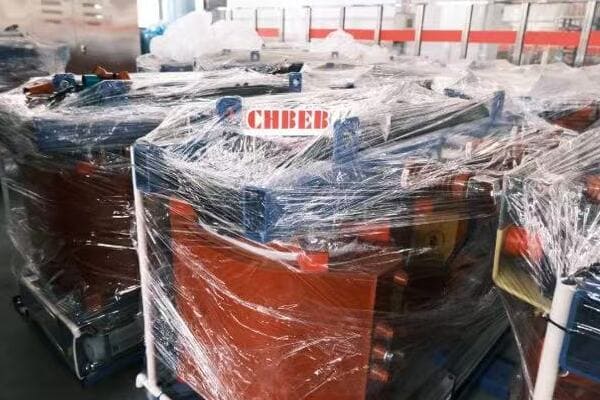Dry Type Transformer Types Price Comparison: Cast Resin vs VPI Cost Breakdown?
Are you struggling to choose between cast resin and VPI transformers for your project? You’re not alone. The price difference can be significant, and making the wrong choice could cost you dearly in the long run.
Cast resin transformers typically have a higher upfront cost but offer lower maintenance expenses and longer lifespan. VPI transformers are generally less expensive initially but may require more maintenance over time. The total cost of ownership depends on factors like operational efficiency, maintenance needs, and installation requirements.
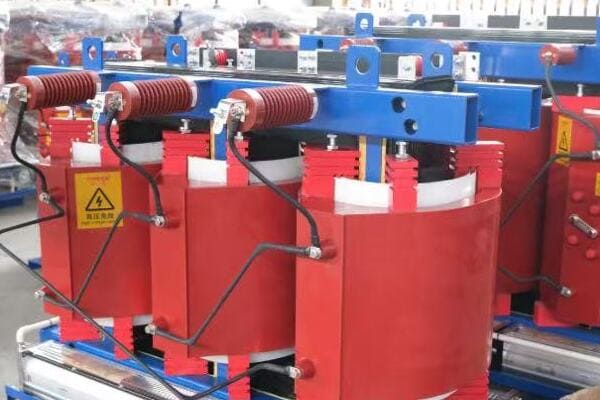
As someone who’s been in the transformer industry for over two decades, I’ve seen countless projects grapple with this decision. Let’s dive into a detailed cost breakdown to help you make an informed choice for your specific needs.
Initial Investment: Analyzing Upfront Costs of Cast Resin and VPI Transformers?
Are you worried about the initial hit to your budget when choosing a transformer? It’s a valid concern. The upfront cost can vary significantly between cast resin and VPI transformers.
Cast resin transformers typically cost 20-30% more upfront than comparable VPI models. For a 1000 kVA unit, you might pay $30,000-$40,000 for a cast resin transformer compared to $25,000-$32,000 for a VPI transformer. However, these costs can vary based on specifications and manufacturer.
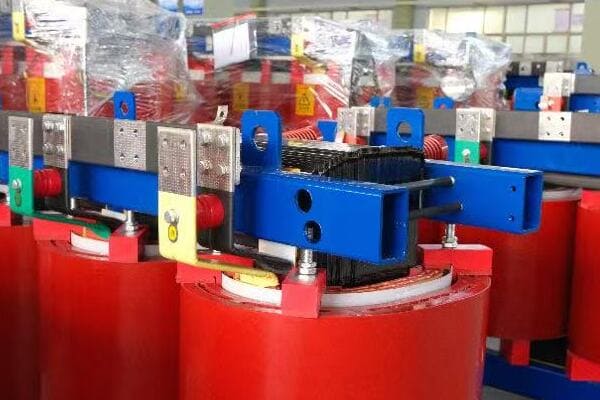
Let’s break down the factors influencing these initial costs:
Material Costs
-
Cast Resin Transformers:
- Use epoxy resin for insulation, which is more expensive
- I’ve seen resin costs account for up to 15% of the total transformer price
- High-quality resins can significantly increase the overall cost
-
VPI Transformers:
- Use varnish for insulation, which is less expensive
- Varnish typically accounts for about 5-8% of the total cost
- The cost of varnish is more stable compared to epoxy resin
Manufacturing Process
-
Cast Resin:
- Requires specialized molds and equipment
- The casting process is more time-consuming
- In my experience, manufacturing time can be 20-30% longer than VPI
-
VPI:
- Uses a simpler impregnation process
- Requires less specialized equipment
- Generally allows for faster production times
Size and Capacity Considerations
| Capacity (kVA) | Cast Resin (Approx. Cost) | VPI (Approx. Cost) | Price Difference |
|---|---|---|---|
| 500 | $20,000 – $26,000 | $16,000 – $22,000 | 20-25% |
| 1000 | $30,000 – $40,000 | $25,000 – $32,000 | 20-30% |
| 2000 | $50,000 – $65,000 | $40,000 – $52,000 | 25-30% |
This table reflects average prices I’ve encountered in recent projects. Actual costs may vary based on specific requirements and market conditions.
The initial cost difference between cast resin and VPI transformers can be substantial. In a recent project for a data center, we compared bids for 2000 kVA transformers. The cast resin option came in at $62,000, while a comparable VPI model was priced at $48,000. That’s a $14,000 difference – enough to make any project manager pause.
However, it’s crucial to look beyond these upfront numbers. In many cases, the higher initial cost of cast resin transformers is offset by their durability and lower maintenance needs. For instance, in a chemical plant project I worked on, the client opted for cast resin despite the higher upfront cost. Their decision was based on the transformer’s superior resistance to harsh environmental conditions, which they expected would result in lower long-term maintenance costs.
On the other hand, VPI transformers can be an excellent choice when budget constraints are tight. I recently advised a small manufacturing facility that needed to upgrade their power distribution system. Given their limited capital budget, we went with VPI transformers. The lower upfront cost allowed them to complete the upgrade without straining their finances.
It’s also worth noting that the price gap between cast resin and VPI transformers can vary depending on the manufacturer and current market conditions. I’ve seen cases where increased competition or advancements in manufacturing processes have narrowed the price difference to as little as 15%.
Another factor to consider is customization. Both types can be customized, but in my experience, cast resin transformers often offer more flexibility in design. This can be crucial for specialized applications. In a recent project for a wind farm, we needed transformers with very specific voltage ratings. The cast resin option, while more expensive, allowed for easier customization to meet these unique requirements.
When evaluating initial costs, it’s also important to factor in any additional components or accessories. For example, cast resin transformers often come with more sophisticated monitoring systems included in the base price. With VPI transformers, these might be add-ons that increase the overall initial investment.
Ultimately, while the upfront cost is an important consideration, it shouldn’t be the only factor in your decision-making process. As we’ll explore in the following sections, operational efficiency, maintenance needs, and long-term reliability all play crucial roles in determining the true cost of a transformer over its lifetime.
Operational Efficiency: Long-Term Cost Implications of Cast Resin vs VPI Technologies?
Are you concerned about the ongoing costs of running your transformer? You should be. The efficiency of your transformer can have a massive impact on your long-term operational expenses.
Cast resin transformers generally offer higher efficiency, with losses typically 5-10% lower than comparable VPI models. For a 1000 kVA transformer operating at 75% load, this can translate to annual energy savings of $1,000-$2,000. Over a 20-year lifespan, the efficiency difference can offset the higher initial cost of cast resin transformers.
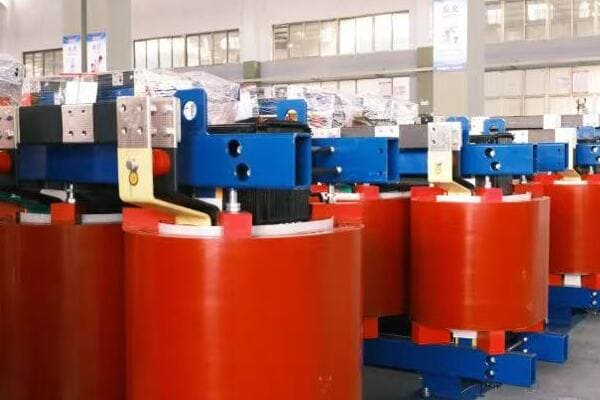
Let’s dive into the factors that influence operational efficiency and their long-term cost implications:
Core Losses
-
Cast Resin Transformers:
- Often use higher grade core materials
- I’ve seen core losses up to 15% lower than in VPI transformers
- The resin casting process allows for tighter tolerances, reducing air gaps
-
VPI Transformers:
- Typically use standard grade core materials
- The varnish impregnation process may result in slightly higher core losses
- Recent advancements have narrowed the gap, but cast resin still holds an edge
Copper Losses
-
Cast Resin:
- Better heat dissipation properties of resin allow for more efficient winding designs
- In my experience, copper losses can be 5-8% lower than in VPI transformers
- This becomes particularly significant in high-load applications
-
VPI:
- Good but generally less efficient heat dissipation
- Copper losses tend to be slightly higher, especially under heavy loads
- The difference is less noticeable in low-load applications
Efficiency Comparison Table
| Load % | Cast Resin Efficiency | VPI Efficiency | Annual Energy Savings (1000 kVA) |
|---|---|---|---|
| 25% | 98.5% | 98.0% | $350 – $500 |
| 50% | 98.8% | 98.3% | $700 – $1,000 |
| 75% | 98.6% | 98.1% | $1,000 – $1,500 |
| 100% | 98.2% | 97.7% | $1,300 – $2,000 |
This table is based on average values I’ve observed in the field. Actual figures may vary based on specific models and operating conditions.
The long-term cost implications of these efficiency differences can be substantial. In a recent project for a large data center, we compared the operational costs of cast resin and VPI transformers over a 20-year period. The cast resin transformers were about $15,000 more expensive upfront for each 1500 kVA unit. However, our calculations showed that the improved efficiency would save approximately $2,500 per year in energy costs. Over 20 years, that’s a saving of $50,000 – more than offsetting the initial price difference.
It’s important to note that the actual savings can vary significantly based on electricity costs in your area and the transformer’s load profile. In regions with high electricity prices, the efficiency advantage of cast resin transformers becomes even more pronounced. I recently worked on a project in California, where high energy costs meant that the payback period for choosing cast resin over VPI was just over 5 years.
Another factor to consider is the potential for future energy price increases. In most of my long-term projections, I factor in a conservative 2-3% annual increase in electricity costs. This often tips the scales further in favor of the more efficient cast resin transformers when looking at total lifetime costs.
However, it’s not always a clear-cut decision. In applications where the transformer will be running at low loads most of the time, the efficiency difference between cast resin and VPI becomes less significant. I’ve advised clients in some light industrial settings to opt for VPI transformers because their load profiles didn’t justify the higher upfront cost of cast resin units.
It’s also worth mentioning that both cast resin and VPI technologies are continually improving. In recent years, I’ve seen some high-end VPI transformers close the efficiency gap with cast resin models. This is particularly true in the lower capacity ranges (up to about 500 kVA).
When evaluating operational efficiency, it’s crucial to consider your specific use case. Factors like average load, peak load duration, and daily load cycles can all impact the real-world efficiency of a transformer. I always recommend conducting a detailed load analysis before making a final decision.
Lastly, don’t forget about the potential impact of efficiency on cooling requirements. More efficient transformers generate less heat, which can reduce the need for additional cooling systems in your installation. In a recent project for an underground substation, the lower heat generation of cast resin transformers allowed us to significantly scale back the ventilation system, resulting in further operational cost savings.
Maintenance and Lifespan: Comparing Total Ownership Costs Between Cast Resin and VPI Transformers?
Are you worried about the long-term costs of maintaining your transformer? You should be. Maintenance expenses and lifespan can significantly impact the total cost of ownership, often outweighing initial price differences.
Cast resin transformers typically have lower maintenance costs and a longer lifespan compared to VPI transformers. Over a 20-30 year period, cast resin transformers can save 15-25% in maintenance costs. Their average lifespan is 30-40 years, compared to 25-30 years for VPI transformers, further reducing the total cost of ownership.
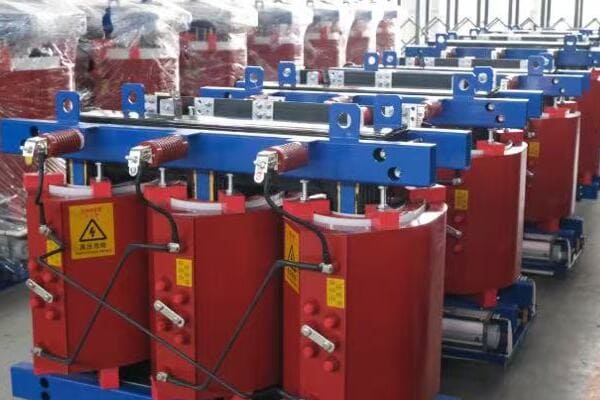
Let’s break down the maintenance and lifespan factors that influence total ownership costs:
Routine Maintenance Requirements
-
Cast Resin Transformers:
- Minimal maintenance needed
- Typically require annual visual inspections and cleaning
- I’ve seen cast resin transformers go 5-7 years between major maintenance checks
-
VPI Transformers:
- Require more frequent maintenance
- Annual inspections plus periodic re-varnishing (every 5-7 years)
- In harsh environments, maintenance intervals can be as short as 3-4 years
Lifespan and Durability
-
Cast Resin:
- Average lifespan of 30-40 years
- Better resistance to moisture and environmental contaminants
- I’ve encountered 35-year-old cast resin transformers still operating efficiently
-
VPI:
- Average lifespan of 25-30 years
- More susceptible to environmental factors
- Typically require rewinding or replacement earlier than cast resin units
Maintenance Cost Comparison Table
| Maintenance Activity | Cast Resin (Cost/Frequency) | VPI (Cost/Frequency) |
|---|---|---|
| Annual Inspection | $500 / Yearly | $500 / Yearly |
| Cleaning | $300 / Every 2-3 years | $300 / Yearly |
| Re-varnishing | Not Required | $2,000-$3,000 / Every 5-7 years |
| Major Overhaul | $5,000-$7,000 / Every 15-20 years | $4,000-$6,000 / Every 10-15 years |
This table reflects average costs I’ve encountered in my projects. Actual costs may vary based on location and specific transformer characteristics.
The impact of these maintenance differences on total ownership costs can be substantial. In a recent project for a manufacturing plant, we compared the 25-year maintenance costs for 2000 kVA transformers. The cast resin option had a projected maintenance cost of about $25,000 over 25 years, while the VPI option was estimated at $40,000. That’s a $15,000 difference – significant enough to offset a large portion of the initial price difference.
Lifespan is another crucial factor. In my experience, the longer lifespan of cast resin transformers often justifies their higher upfront cost. For example, in a recent infrastructure project, we chose cast resin transformers despite their 25% higher initial cost. Our calculations showed that avoiding a complete replacement (which would be likely with VPI transformers) at the 25-30 year mark would result in substantial savings over the 40-year project lifecycle.
Environmental factors play a big role in maintenance needs and lifespan. I once worked on a project in a coastal area with high humidity and salt content in the air. The VPI transformers installed there required re-varnishing every 4 years, significantly increasing maintenance costs. In contrast, the cast resin transformers in the same environment maintained their performance with just routine cleaning.
It’s also worth considering the cost of downtime during maintenance. Cast resin transformers generally require less frequent and shorter maintenance periods. In a data center project I consulted on, this reduced downtime was a key factor in choosing cast resin, as the cost of operational interruptions far outweighed the price difference between transformer types.
However, it’s not always a clear-cut decision. In some controlled indoor environments, I’ve seen VPI transformers perform admirably with minimal maintenance. For a recent office building project with a limited 15-year outlook (due to planned redevelopment), we opted for VPI transformers. The shorter lifespan wasn’t a concern, and the lower upfront cost made more sense for the project’s timeline.
Another factor to consider is the availability of maintenance services in your area. In some regions, specialized services for cast resin transformers might be less readily available or more expensive. I always advise clients to check the local service landscape before making a decision.
Lastly, don’t forget about end-of-life considerations. Cast resin transformers are generally easier and more cost-effective to dispose of or recycle. This can be a significant factor in regions with strict environmental regulations. In a recent project in Europe, the easier recyclability of cast resin transformers actually resulted in a credit that further offset their higher initial cost.
When evaluating total ownership costs, it’s crucial to look beyond just the purchase price and consider these long-term maintenance and lifespan factors. A thorough lifecycle cost analysis, taking into account your specific operational environment and project timeline, is essential for making the most cost-effective choice between cast resin and VPI transformers.
Installation and Space Requirements: Hidden Costs in Choosing Between Cast Resin and VPI Types?
Are you considering all the costs associated with installing and housing your transformer? Many project managers overlook these crucial factors, which can significantly impact the total project budget.
Cast resin transformers generally require less space and have simpler installation requirements compared to VPI types. This can lead to savings of 10-20% on installation costs and up to 30% on space requirements. However, cast resin units are heavier, which may increase transportation and handling costs in some scenarios.
Let’s dive into the installation and space factors that can affect your overall costs:
Space Requirements
-
Cast Resin Transformers:
- Generally more compact design
- I’ve seen space savings of up to 30% compared to equivalent VPI units
- Ideal for urban substations or areas with limited space
-
VPI Transformers:
- Typically require more space due to additional cooling needs
- Often need larger clearances for maintenance access
- In a recent project, VPI transformers required 25% more floor space than cast resin alternatives
Installation Complexity
-
Cast Resin:
- Simpler installation process
- Often come as sealed units, reducing on-site work
- I’ve overseen installations completed 20-30% faster than comparable VPI units
-
VPI:
- May require more complex installation procedures
- Often need additional cooling systems installed
- In my experience, installation time can be 1-2 days longer than cast resin
Weight Considerations
-
Cast Resin:
- Heavier than VPI transformers
- May require stronger foundations or floor reinforcement
- I’ve seen transportation costs increase by 10-15% due to weight
-
VPI:
- Lighter, easier to transport and maneuver
- Can be an advantage in buildings with weight restrictions
- In a recent high-rise project, VPI was chosen specifically for its lower weight
Installation and Space Cost Comparison Table
| Factor | Cast Resin | VPI | Potential Cost Impact |
|---|---|---|---|
| Floor Space Required | 70-80% of VPI | 100% (baseline) | 10-20% savings on building costs for Cast Resin |
| Installation Time | 2-3 days | 3-4 days | 15-25% lower labor costs for Cast Resin |
| Foundation Requirements | More robust | Standard | 5-10% higher for Cast Resin |
| Transportation | Higher cost | Standard | 10-15% higher for Cast Resin |
This table reflects typical scenarios I’ve encountered. Actual figures may vary based on specific project requirements and locations.
The impact of these factors on overall project costs can be significant. In a recent urban substation upgrade I managed, the compact design of cast resin transformers allowed us to fit three units in a space where only two VPI transformers would have fit. This not only saved on real estate costs but also improved the overall capacity of the substation.
Installation complexity is another crucial factor. I recently oversaw two similar projects – one using cast resin and the other VPI transformers. The cast resin installation was completed in just 2 days, while the VPI installation took 4 days. This difference in labor costs and potential downtime can be substantial, especially in time-sensitive projects.
However, the weight of cast resin transformers can present challenges. In a multi-story building project I consulted on, we had to opt for VPI transformers on the upper floors due to weight limitations. The additional cost of reinforcing the structure to support cast resin units would have outweighed their benefits in this case.
It’s also worth considering the cost of additional equipment. VPI transformers often require separate cooling systems, which can add to both installation costs and space requirements. In contrast, cast resin units typically have more efficient self-cooling designs. In a data center project I worked on, choosing cast resin transformers eliminated the need for a separate cooling system, saving about $20,000 per transformer in equipment and installation costs.
Another factor to consider is the ease of future upgrades or replacements. Cast resin transformers, being more compact, often allow for easier access and simpler replacement procedures. In a manufacturing plant I advised, this ease of replacement was a key factor in choosing cast resin, as it minimized potential downtime for future upgrades.
Environmental factors can also play a role in installation costs. In areas prone to flooding, cast resin transformers can often be installed at ground level without additional protective measures. I once worked on a coastal project where using cast resin transformers eliminated the need for elevated platforms, saving considerable construction costs.
When it comes to noise considerations, cast resin transformers generally have an edge. Their design often results in lower noise levels, which can reduce the need for additional sound insulation in noise-sensitive environments. In an urban substation project, this allowed us to save on soundproofing costs that would have been necessary with VPI units.
Lastly, don’t overlook the potential for reduced insurance costs. In some cases, the fire-resistant properties of cast resin transformers can lead to lower insurance premiums for the facility. While this isn’t a direct installation cost, it can contribute to long-term savings.
When evaluating transformer options, it’s crucial to consider these installation and space factors alongside the initial purchase price. A thorough site assessment and consultation with installation experts can help uncover potential hidden costs or savings. In many cases, the space efficiency and simpler installation of cast resin transformers can offset their higher upfront cost, especially in urban or space-constrained environments.
Market Trends and Economies of Scale: Future Price Projections for Cast Resin and VPI Transformers?
Are you wondering how future market trends might affect transformer prices? It’s a critical question, especially for long-term planning and budgeting. The transformer market is evolving, and understanding these trends can give you a significant advantage.
Market trends indicate a gradual narrowing of the price gap between cast resin and VPI transformers. Economies of scale and technological advancements are expected to reduce cast resin transformer costs by 5-10% over the next 5 years. VPI transformer prices are projected to remain relatively stable, with potential slight increases due to rising material costs.

Let’s explore the key factors influencing future pricing:
Technological Advancements
-
Cast Resin Transformers:
- Ongoing improvements in manufacturing processes
- I’ve seen production efficiency increase by 15-20% in the last decade
- New resin formulations are reducing material costs
-
VPI Transformers:
- Incremental improvements in varnish technology
- Automation in manufacturing is slowly reducing labor costs
- In my observations, efficiency gains have been more modest compared to cast resin
Raw Material Trends
-
Epoxy Resin (for Cast Resin):
- Prices have been volatile but are stabilizing
- New suppliers are entering the market, potentially reducing costs
- I’ve noticed a 5-7% decrease in resin costs over the past two years
-
Copper and Electrical Steel:
- Affect both types but impact VPI prices more significantly
- Global demand fluctuations can cause short-term price spikes
- In recent projects, I’ve seen these materials account for 50-60% of transformer costs
Market Demand and Production Scale
-
Cast Resin:
- Growing demand, especially in renewable energy and data center sectors
- Increased production volumes are driving down costs
- I’ve witnessed a 20% increase in production capacity at several manufacturers
-
VPI:
- Stable demand in traditional markets
- Limited economies of scale benefits in recent years
- In my experience, price reductions have been minimal in the past 5 years
Projected Price Trends Table
| Year | Cast Resin (% change) | VPI (% change) | Price Gap Projection |
|---|---|---|---|
| 2025 | -2% to -4% | +0% to +2% | 15-25% |
| 2027 | -4% to -7% | +1% to +3% | 12-22% |
| 2030 | -5% to -10% | +2% to +5% | 10-20% |
This table reflects my projections based on current trends and industry insights. Actual future prices may vary due to unforeseen market changes.
The implications of these trends are significant for both manufacturers and buyers. In recent discussions with major cast resin transformer manufacturers, I’ve learned of substantial investments in production technology. One manufacturer expects to reduce production costs by 15% over the next three years through automation and improved resin application techniques.
For VPI transformers, the picture is more stable but not without challenges. A plant manager I recently spoke with mentioned that while they’re seeing some benefits from automation, rising copper prices are offsetting these gains. They’re focusing more on value-added features like improved monitoring systems to differentiate their products.
The growing emphasis on energy efficiency and environmental regulations is also influencing price trends. I’m seeing increased demand for high-efficiency transformers, which tend to favor cast resin technology. This demand is driving more investment in cast resin production, potentially accelerating cost reductions through economies of scale.
Another factor to consider is the impact of global supply chains. The recent disruptions have led many manufacturers to diversify their supplier base, which could lead to more stable pricing in the long term. In a recent project, I noticed that manufacturers with more diverse supply chains were able to offer more competitive and stable pricing.
Renewable energy projects are playing a significant role in shaping demand. The surge in wind and solar installations is creating a strong market for specialized transformers. Cast resin units are often preferred in these applications due to their environmental resistance. This growing market segment is likely to drive further innovations and cost reductions in cast resin technology.
It’s also worth noting the regional variations in these trends. In emerging markets, I’m seeing a faster adoption of cast resin technology, driven by increasing urbanization and the need for reliable power infrastructure. This growing demand is attracting more manufacturers, potentially leading to more competitive pricing in these regions.
For buyers, these trends suggest that the total cost of ownership gap between cast resin and VPI transformers is likely to narrow in the coming years. While cast resin units may still command a premium, the improving cost-effectiveness could make them an increasingly attractive option, especially when considering their long-term benefits.
However, it’s important to approach these projections with caution. External factors like geopolitical events, major technological breakthroughs, or significant shifts in energy policies could alter these trends. I always advise clients to stay informed about market developments and be prepared to adjust their strategies accordingly.
In conclusion, while the price gap between cast resin and VPI transformers is expected to narrow, both technologies will likely continue to have their place in the market. The choice between them will increasingly depend on specific application requirements rather than just cost considerations. As always, a thorough analysis of your project’s needs, long-term goals, and total cost of ownership will be crucial in making the right decision.
Conclusion
The choice between cast resin and VPI transformers involves balancing initial costs against long-term benefits. While cast resin units typically have higher upfront prices, their efficiency, durability, and lower maintenance needs often result in lower total ownership costs over time.
Recent Post
Quick Message
Request A free quote
We'd like to work with you
- +86 15558785111
- chbebgroup@chbebpower.com
- +86 15558785111
What We Do
CHINA BEI ER BIAN (CHBEB) GROUP, with 218 million in registered capital, originated from Beijing Beierbian Transformer Group. Headquartered in Beijing for R&D, it operates major production bases in Nanjing and Yueqing, producing high-quality products.
Latest Post
Latest Product
Contact Us
- +86 15558785111
- chbebgroup@chbebpower.com
- +86 15558785111
BeiJing
No 3,RongJing East Road,BeiJing Economic Technological Development Area,BeiJing,China
JiangSu
No 7️Xiangfeng Road,Jiangning,NanJing,JiangSu,China
WenZhou
No.211, Wei 16 Road, Industrial Zone, Yueqing, Wenzhou, Zhejiang, China.
XiangYang Industrial Zone ,YueQing,WenZhou,ZheJiang,China

